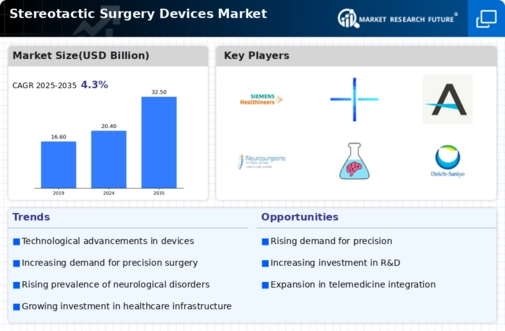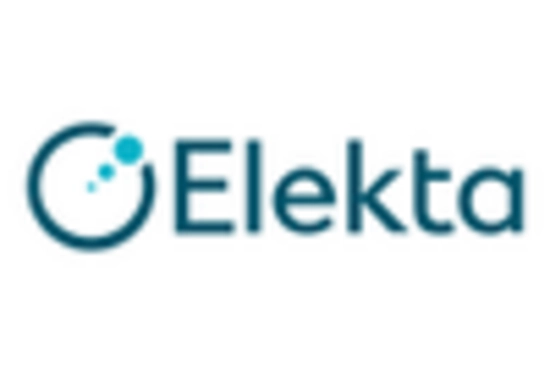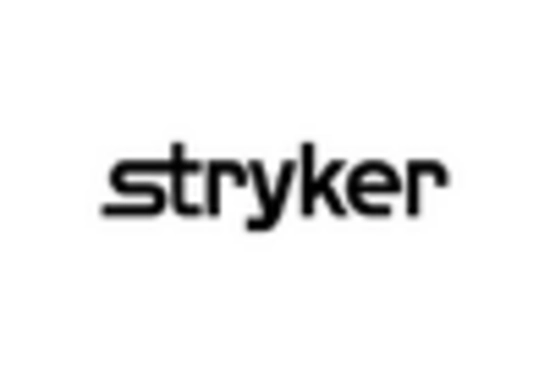Market Trends
Key Emerging Trends in the Stereotactic Surgery Devices Market
The market trends of stereotactic surgery devices have witnessed significant evolution in recent years, driven by advancements in technology, growing demand for minimally invasive surgical procedures, and increasing prevalence of neurological disorders requiring precise intervention. Stereotactic surgery, a minimally invasive technique that utilizes three-dimensional coordinates to precisely target areas within the body, has revolutionized the treatment of various neurological conditions, including brain tumors, movement disorders, and chronic pain. One notable trend in the market is the increasing adoption of stereotactic surgery devices across a wide range of medical specialties, including neurosurgery, oncology, and radiation therapy. This growing adoption is fueled by the benefits of stereotactic surgery, including reduced surgical trauma, shorter recovery times, and improved patient outcomes, driving demand for advanced stereotactic surgical systems and accessories.
Moreover, the market has seen a shift towards the development of more integrated and multifunctional stereotactic surgery platforms, capable of performing a range of procedures with greater precision and efficiency. Modern stereotactic surgery devices combine advanced imaging technologies, robotic assistance, and real-time navigation systems to enhance surgical accuracy and enable complex procedures that were previously considered high-risk or technically challenging. This trend towards integration and innovation reflects a broader shift in the healthcare industry towards personalized medicine and value-based care, with healthcare providers increasingly seeking out technologies that can improve patient outcomes while reducing healthcare costs.
Additionally, there has been a growing emphasis on the development of image-guided stereotactic surgery devices, leveraging advancements in medical imaging modalities such as MRI, CT, and PET to provide real-time visualization of target structures and surrounding anatomy during surgical procedures. These image-guided systems allow surgeons to precisely navigate through complex anatomical structures, reducing the risk of complications and enabling more precise targeting of pathological lesions. Furthermore, the integration of artificial intelligence (AI) and machine learning algorithms into stereotactic surgery devices has the potential to further enhance surgical precision and optimize treatment planning, paving the way for more personalized and effective interventions.
Furthermore, the stereotactic surgery devices market has been influenced by changing regulatory landscapes and healthcare policies, which have implications for device approval, reimbursement, and market access. Stringent regulatory requirements for medical devices, coupled with the increasing focus on patient safety and healthcare quality, pose challenges for market players seeking to bring new stereotactic surgery devices to market. However, these regulations also serve to ensure the safety and efficacy of medical devices and promote innovation in the field of stereotactic surgery.
Moreover, the COVID-19 pandemic has had a significant impact on the stereotactic surgery devices market, disrupting supply chains, delaying elective procedures, and prompting healthcare providers to adopt new approaches to delivering care. The pandemic has underscored the importance of telemedicine and remote monitoring technologies in managing patients with neurological disorders, driving the adoption of remote consultation platforms and virtual surgical planning tools. Additionally, the pandemic has accelerated the development and adoption of robotic-assisted stereotactic surgery systems, enabling surgeons to perform procedures with greater precision and control while minimizing the risk of exposure to infectious agents.

















Leave a Comment